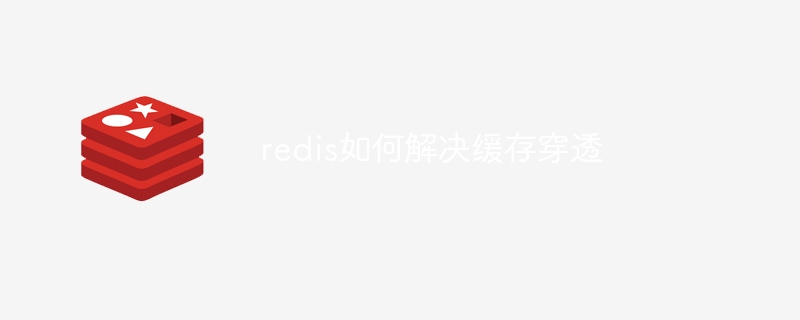Redis solves cache penetration through the following methods: 1. Set default values; 2. Use bloom filters; 3. Use null value cache; 4. Use current limiting. This way, when querying for a non-existent key, Redis can return a default value, check for existence, or limit the request rate, thereby avoiding overloading the backend database.

How Redis solves cache penetration
Cache penetrationrefers to when querying a When the key does not exist, Redis does not hit the cache, causing the request to directly reach the backend database. This can put a huge strain on the backend database, especially if a malicious user queries heavily using non-existent keys.
Redis uses the following methods to solve cache penetration:
1. Set a default value
You can set a default value for a non-existent key . For example, you can set the default value for a non-existent product ID to "No such product". This way, when querying for a non-existent key, Redis will return a default value instead of forwarding the request to the backend database.
2. Using a Bloom filter
A Bloom filter is a probabilistic data structure used to quickly check whether an element exists in a set. You can use bloom filters to check if a key exists in Redis. If the key exists, Redis will hit the cache; if the key does not exist, Redis will forward the request to the backend database. Bloom filters can effectively reduce the number of requests to the backend database.
3. Use null value caching
Similar to setting the default value, you can also use null value caching. When querying for a key that does not exist, Redis will return a special value (such as "does not exist") instead of forwarding the request to the backend database. This allows you to track keys that don't exist and take appropriate action, such as adding them to Redis.
4. Use current limiting
Current limiting is a technology used to limit the request rate to the backend database. You can use throttling to prevent malicious users from flooding the backend database with non-existent keys. When the throttling threshold is reached, Redis will return an error or timeout response instead of forwarding the request to the backend database.
The above is the detailed content of How redis solves cache penetration. For more information, please follow other related articles on the PHP Chinese website!
 Commonly used database software
Commonly used database software What are the in-memory databases?
What are the in-memory databases? Which one has faster reading speed, mongodb or redis?
Which one has faster reading speed, mongodb or redis? How to use redis as a cache server
How to use redis as a cache server How redis solves data consistency
How redis solves data consistency How do mysql and redis ensure double-write consistency?
How do mysql and redis ensure double-write consistency? What data does redis cache generally store?
What data does redis cache generally store? What are the 8 data types of redis
What are the 8 data types of redis



